Self-Guided Geowalk Around L’Etacq
This self-guided geowalk explores the deep history of the North West corner of Jersey from a time when we were a deltaic environment through millions of years of volcanic activity to ice ages and a time when prehistoric people populated the land. It starts on the beach and then takes you up on to the headlands above the Pinnacle and can be extended to take in Grosnez Castle and the bunkers of the Second World War German Occupation. Developed by walking guide Nicky Mansell, it tells the story of climate change and man's impact on the land. This geowalk is about 4.5 miles and will take about 2 and1/2 hours. It is dramatic at all times of the year, but Nicky's favourite is when the thrift and gorse is out in the late spring.
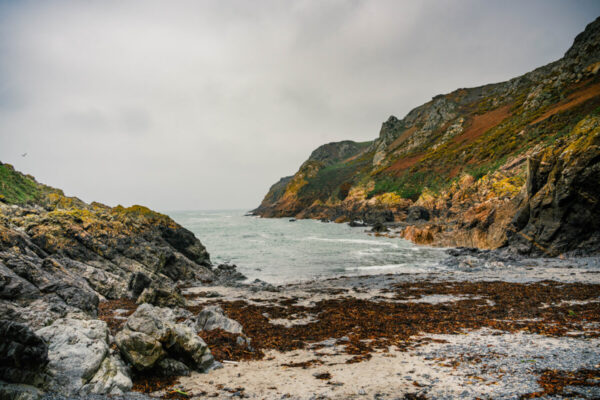
The start of our climate change story
Park at the car park where the Milano Bars once stood on La Verte Rue. Start the walk by going down the steps in the granite wall at the southern end of the car park. Head along the beach with the wall to the left. If you look down in this area you are likely to find remnants of an old forest which looks like peat beds. At times it may be completely covered by sand but there are usually some sections among the rocks. Try not to walk across the beds and never take anything as they are a protected site. This is the start of our climate change story. Sea levels around the world are affected by the warming and cooling of the atmosphere. This has been happening over hundreds of thousands of years due to cycles relating to the suns orbit, the earths tilt and solar activity. There have been periods of extreme cold (ice ages) and warmer ‘interglacial’ periods.
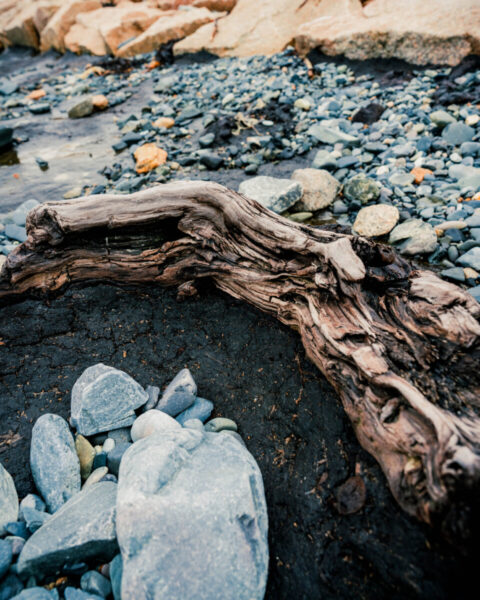
A forest relic from 5,000 years ago
The forest here is a relic from over 5000 years ago when sea levels around the island were lower and the climate was cooler. This would have been when neolithic people were creating the megalithic sites like La Hougue Bie, La Pouquelaye de Faldouet and Les Monts, Grantez. This intertidal zone would have been a coastal plain with alder and birch forest. Now look around you. From this spot you can also see evidence of much higher sea levels. Look inland around the back of the bay, the old weathered cliff line was created during much warmer periods when sea levels were higher. The flatter land towards the beach could be called a raised beach but is also an area of blown sand. The story of higher sea levels is further complicated by the fact that the land itself changes due to tectonic activity and adjustment after ice ages, so when the sea was lapping the cliffs around the back of the bay, conditions may not have been much warmer than today but the land has risen so the sea no longer reaches it. Without the sea wall along the bay the sea could encroach further in land and lap again at the bottom of these ‘fossil cliffs’.
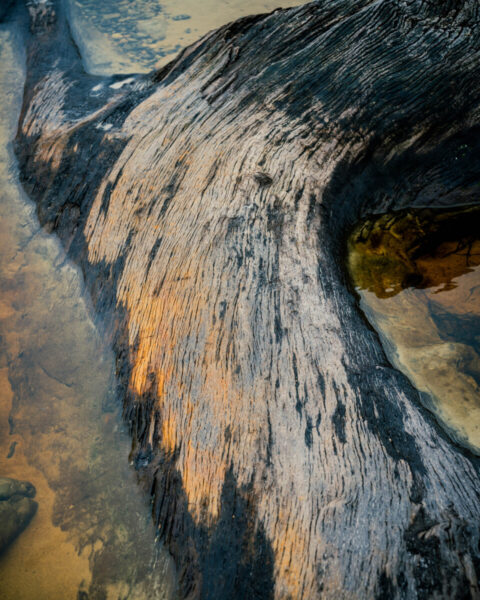
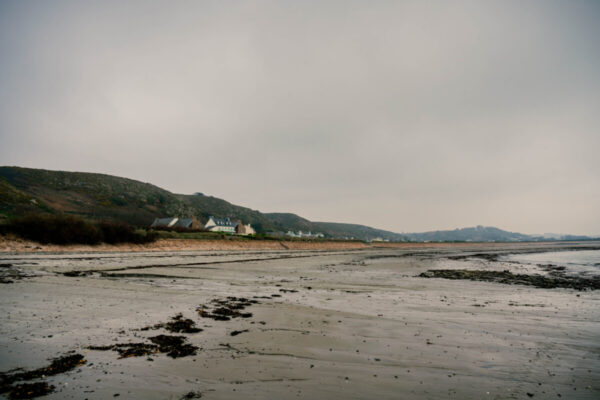
Geological Secrets of Stinky Bay
Now walk north along the beach towards Faulkner Fisheries. The sky line here is also evidence of different sea levels, Le Grand Étacquerel to the right of the road is an old stack, the sea would once have surrounded the rocky hill and also the promontory with the bunker and Faulkner Fisheries on. Follow the road around towards Le Pulec and go down the slipway. At certain times of the year you will understand why it is known locally as Stinky Bay. This was a very popular place for collecting vraic (seaweed in Jèrriais) by the local farmers. In 1726 a 77 foot dead whale was stranded on the beach. This was claimed by the Seigneur of Vinchelez de Bas and two bones from the whale can still be seen behind one of the gates of the manor. Walk down the slip until you can see the Bay. You are standing on a geological boundary between the shale of St Ouen’s Bay and the granite of the headland. The shale was laid down in submarine deltaic conditions 600 to 590 million years ago (MA), maybe similar to the Mississippi delta today. They are the grey rocks you can see across the Bay and also to the right on Le Petit Étacquerel. You can see how the flat beds of rock have been tilted by earth movements. The granite was intruded over 100 million years later about 465 to 426 MA. Granite is an intrusive volcanic rock i.e. it was formed underground and cooled slowly giving us the lovely pink colour with crystals of quartz, feldspar and mica. It is possible to see where the granite has been squeezed in to gaps in the shales in places. There is also a mineral vein running down the Bay.
The Frozen Legacy of Stinky Bay
Before leaving the beach look behind you at the unconsolidated material making the cliff at the back of the Bay. This is periglacial head material created when temperatures were much lower and freeze-thaw was happening on the cliffs around, angular blocks would have fallen into the ravines combined with other material sludging down into the valley. Imagine what would happen if the wall at the bottom was removed. The sea would eventually erode through and Le Grand Étacquerel would become a stack again. Now walk back up the slip and look to your left here you will see a gulley filled with deposits. This is an interesting spot as it has a mixture of rounded pebbles indicating that it was once beach material showing a previous higher sea level and also angular unsorted periglacial head. If you want to find out more about Le Pulec look on the Jersey geology trail website.
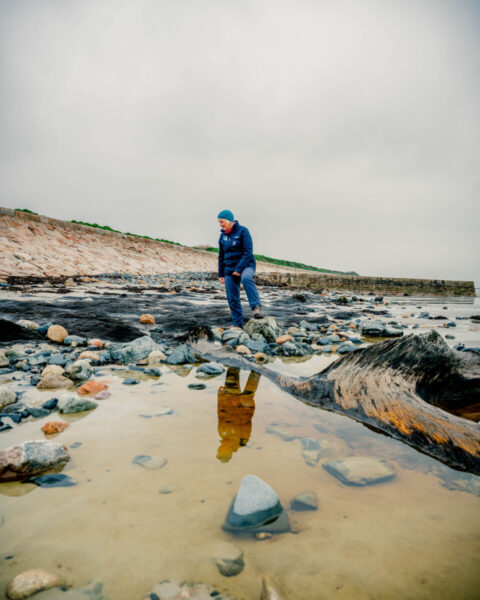
From Prehistoric Sites to Fault Lines
Now walk back onto the road and take the footpath to the left which will take you on to the headland. The path is steep but the views from the top are well worth stopping to see. If you turn and look south you can see across the sweep of St Ouen’s Bay towards La Corbière. The Bay is formed in the softer shale and the North West and South West corners of the Island are both more resistant granite. Also from the top you can look down to Le Pulec and L’Étacq and can see the geological junction and the former stacks of Le Grand Étacquerel and Le Petit Étacquerel. If the tide is low you will see the reef dissected by straight gullies which are formed along fault lines created from earthquake activity when the Island was on a tectonic boundary. Keep walking along the footpath closest to the cliff. Once you pass the bunkers on the right you will get to a point where you can see directly down to Le Pinacle. This is one of the most important prehistoric sites in the Island. There is evidence of occupation on the site from over 4000 years BC through to Roman times. If you look carefully at the land bridge between the cliff and Le Pinacle you can see a number of large stones which are part of Neolithic and Copper Age walls. You can also see the remains of the small Gallo Roman temple. On the cliff to the south you may be able to spot a horizontal line of a dark grey rock about a third of the way up the cliff. This is a dolerite intrusion. The rock from here was used in the stone axe factory which was thought to be at this site in Neolithic times. It is likely that the people lived on the coastal plain and their remains are lost to the sea.
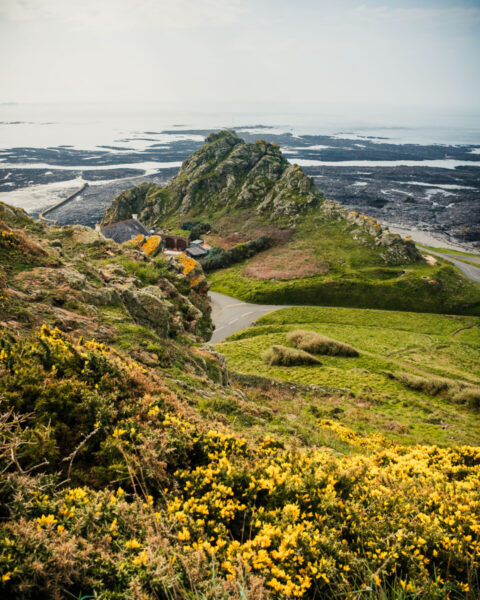
Spot the Choughs
Now continue north across the boardwalk over the Canal Du Squez which is an important marshy area and home to the agile frog. Continue close to the cliffs, the vegetation in this area is a mixture of heather and gorse and for bird watchers you may see Dartford Warblers. You may also be lucky enough to see Choughs from the Birds on the Edge project which now roam free in this area. If you look back once you have crossed the steam and are on the next headland you will see the true majesty of Le Pinacle and see why it is considered a giant natural menhir. It is in fact a fossil stack again formed during times of different sea levels. There is a cave which runs under the col and it is not inconceivable that in the future this area will be eroded even more and it will become a stack again.
Walk towards the large Second World War observation tower. This is MP3 (Marine Peilstande) one of three of these observation towers built. Nine were planned but this one was the last to be built. From here head north towards the castle. There are two paths take the one which descends slightly and goes along closer to the sea. You will go along past a very large perched boulder which from certain points looks like a man’s head.
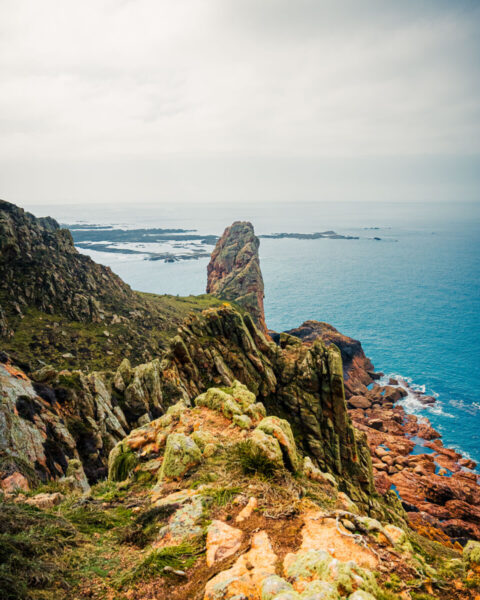
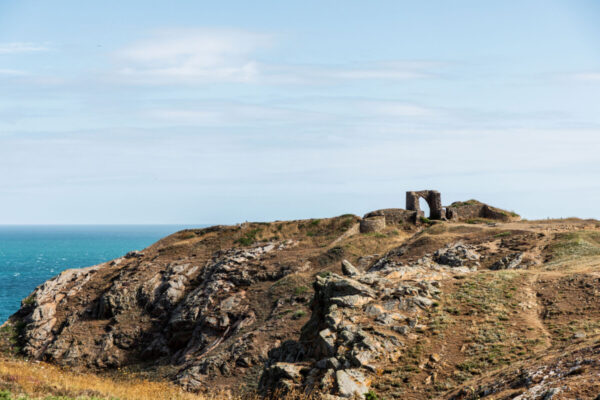
100 years war
It is worth going into the Castle. Grosnez Castle was built in the 14th century at the beginning of the 100 years war when Jersey and France were constantly in conflict. It acted as a refuge for local farmers but suffered from a lack of fresh water so would never have done well in a siege. By the 16th century it was a ruin but it is still worth exploring and the arch makes a classic shot for Instagram. You should also walk down the steps to the small lighthouse as the views to the North and along towards Plémont are breathtaking. On windy days you may see gannets flying and diving out to sea and on incoming tides I have seen dolphins swimming past heading to the reefs off L’Étacq to feed.